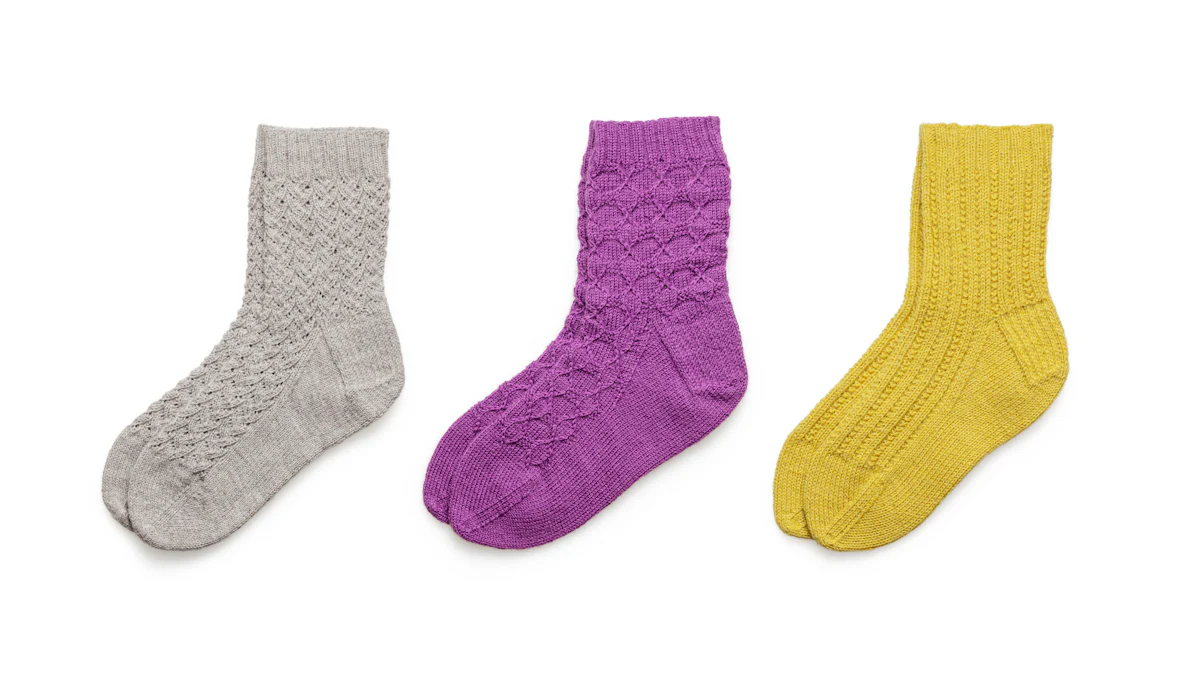
Choosing the right socks for kids matters more than you might think. Kids have delicate skin that needs extra care. Childrens 100 cotton socks stand out as a top choice. These socks offer comfort and safety for sensitive skin. You will find detailed benefits and practical advice in this blog to help make informed decisions.
Benefits of Childrens 100 Cotton Socks

Comfort
Softness and Gentle on Skin
Childrens 100 cotton socks feel like a gentle hug on your child’s feet. Cotton is naturally soft, providing a cozy experience. The material reduces the risk of irritation and rashes. Kids with delicate skin benefit greatly from this softness. Cotton’s hypoallergenic properties make it an excellent choice for sensitive skin.
Flexibility and Fit
Cotton socks offer flexibility and a snug fit. The material stretches easily, adapting to the shape of your child’s feet. This ensures that the socks stay in place without slipping. A good fit prevents blisters and discomfort. Your child can run and play freely without any restrictions.
Breathability
Moisture Absorption
Cotton excels at absorbing moisture. Childrens 100 cotton socks wick sweat away from the skin. This keeps your child’s feet dry and comfortable throughout the day. Dry feet reduce the chances of fungal infections and other skin issues. Cotton’s absorbent nature makes it ideal for active kids.
Prevention of Odor
Breathable cotton socks help prevent odor. The material allows air to circulate, keeping feet cool. Proper ventilation reduces the buildup of bacteria. Less bacteria means less odor. Your child can enjoy fresh-smelling feet even after a long day of play.
Hypoallergenic Properties
Suitable for Sensitive Skin
Cotton is gentle on sensitive skin. Organic cotton socks, in particular, are free from pesticides and insecticides. This makes them safe for children with eczema or other skin conditions. The natural fibers do not cause itching or redness. Your child’s feet remain comfortable and irritation-free.
Reducing Risk of Allergies
Choosing cotton socks can reduce the risk of allergies. Synthetic materials often cause allergic reactions. Cotton, being a natural fiber, poses fewer risks. The hypoallergenic nature of cotton makes it a safer option. Your child can wear these socks without worrying about allergic flare-ups.
Comparisons with Other Materials
Synthetic Fibers
Differences in Breathability
Synthetic fibers like polyester and nylon often lack the breathability of cotton. Cotton’s natural fibers allow air to circulate around your child’s feet. This keeps feet cool in summer and warm in winter. Synthetic materials can trap heat and moisture, leading to sweaty feet. Cotton socks excel at moisture absorption, keeping feet dry and comfortable.
Potential Skin Irritations
Synthetic fibers can cause skin irritations. Polyester and nylon may lead to itching or redness. Cotton, being a natural fiber, is gentle on the skin. Organic cotton socks are free from pesticides and insecticides. This makes them safe for children with sensitive skin. Cotton reduces the risk of allergic reactions and skin irritations.
Wool
Warmth vs. Breathability
Wool provides excellent warmth. However, wool can sometimes be too warm for active kids. Cotton offers a balance between warmth and breathability. Cotton keeps feet cool in summer and warm in winter. Wool can retain heat, which may not be ideal for all-day wear. Cotton’s breathability makes it a versatile choice for various activities.
Allergic Reactions
Wool can cause allergic reactions in some children. The fibers may lead to itching or rashes. Cotton is one of the most hypoallergenic materials available. Organic cotton socks minimize the risk of allergic reactions. Cotton’s natural properties make it a safer option for children with allergies. Your child can wear cotton socks without worrying about skin issues.
Practical Tips for Choosing and Caring for Childrens 100 Cotton Socks

Selecting the Right Size
Importance of Proper Fit
A proper fit ensures comfort and prevents blisters. Childrens 100 cotton socks should fit snugly without being too tight. Loose socks can bunch up and cause discomfort. Tight socks can restrict blood flow and cause irritation. Always check the size chart before purchasing. Measure your child’s feet to find the right size.
Growth Considerations
Kids grow quickly, so consider growth when buying socks. Choose socks with some stretch to accommodate growing feet. Buying a slightly larger size can also be a good idea. This way, the socks will last longer. Regularly check the fit as your child grows. Replace socks that become too tight or too loose.
Washing and Maintenance
Best Practices for Longevity
Proper washing extends the life of childrens 100 cotton socks. Use cold water and a gentle cycle for washing. Avoid using bleach or harsh detergents. Turn the socks inside out before washing. This helps maintain the softness and color. Air-dry the socks instead of using a dryer. Heat can damage the fibers and cause shrinkage.
Avoiding Shrinkage
Shrinkage can ruin the fit of cotton socks. To avoid this, wash the socks in cold water. Hot water causes cotton to shrink. Air-drying is the best method to prevent shrinkage. If you must use a dryer, choose a low heat setting. Avoid overloading the washing machine. This ensures the socks get cleaned properly without excessive friction.
Choosing childrens 100 cotton socks offers many benefits. Cotton socks provide unmatched comfort and breathability. The natural fibers keep feet cool in summer and warm in winter. Kids with sensitive skin find relief from irritations and allergies. Cotton socks also prevent odor and moisture buildup, ensuring fresh feet all day. Make the smart choice for your child’s health and comfort by opting for 100% cotton socks. Always prioritize quality and care when selecting clothing for kids.

